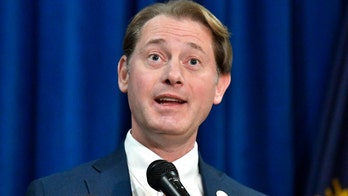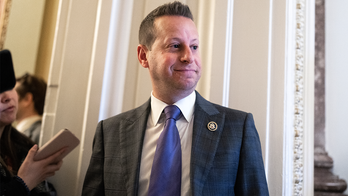Which 2016 candidate has the most on the line in Iowa?
A fair and balanced debate on caucus day
While the top presidential contenders in both parties battle to define their differences, they all have one thing in common: the need to bring out fresh faces to the Iowa caucuses Monday evening.
And that turnout is especially important for candidates like Donald Trump and Bernie Sanders, who are dominating their respective races when it comes to first-time voters, according to the most recent Quinnipiac University Poll in Iowa.
The conventional wisdom goes: if a lot of first-time voters flood the caucus sites, it’s good news for Trump and Sanders. But if they don’t, candidates like Ted Cruz and Hillary Clinton have a better chance.
“The size of the turnout tonight will likely be the key factor, especially on the Democratic side,” Peter A. Brown, assistant director of the Quinnipiac University Poll, said in a statement. “High turnouts with lots of new caucus participants likely would mean a good night for Sen. Bernie Sanders, and for Donald Trump.”
The latest Quinnipiac findings show Trump leading Texas Sen. Cruz 31-24 percent in Iowa, and Vermont Sen. Sanders narrowly leading Clinton 49-46 percent.
But among first-time caucus-goers, Trump leads Cruz 40-22 percent. And Sanders leads Clinton 62-35 percent, representing a gaping lead among the state’s political newcomers.
Whether they show up may boil down in part to each campaign’s ground game, and ability to get people out to the polls.
Cruz suggests Trump’s operation is lacking in this regard.
“We’re not finding Donald Trump’s troops on the ground. They don’t have an organization that is perceptible,” he told Fox News.
But Trump is relying in part on the power of his persona, the factor that’s helped rocket him from outsider to GOP front-runner. He was holding another pair of Iowa rallies on Monday, in a final bid to convince supporters to go out and caucus Monday evening.
“I have a fantastic relationship with the people of Iowa and the evangelicals and the Tea Party, and we really have done a lot of work in Iowa,” Trump told “Fox News Sunday.”
A big indicator of whether a flood of first-timers are coming out will be in the raw turnout figures. In 2012, roughly 121,000 Republicans showed up. In 2008, the last competitive Democratic caucuses, roughly 240,000 Democrats participated, a record number. Even bigger totals Monday evening would point to newcomer caucus-goers turning out.
The pressure is heavy on Clinton in particular, as Sanders is leading comfortably in the polls in the next-up contest in New Hampshire.
“If Sanders wins, he goes 2 and 0 in the first two contests. That puts Clinton in a tough spot. But if she wins tonight, it gives her a shot at New Hampshire,” Democratic strategist Mary Anne Marsh said.
Seeking to tamp down expectations, Cruz said Sunday that he's just pleased to be in the mix for first place.
Cruz has spent the closing days of the Iowa campaign focused intensely on Marco Rubio, trying to ensure the Florida senator doesn't inch into second place. Rubio is viewed by many Republicans as a more mainstream alternative to Trump and Cruz, though he'll need to stay competitive in Iowa in order to maintain his viability.
The campaigns were anxiously keeping an eye on the weather. A snowfall forecast to start Monday night appeared more likely to hinder the hopefuls in their rush out of Iowa than the voters. Republican John Kasich already had decamped to New Hampshire, with New Jersey Gov. Chris Christie and former Florida Gov. Jeb Bush following behind Monday afternoon, hours before the caucuses start.
The trio of governors has had a light footprint in Iowa, banking instead on strong showings in New Hampshire's Feb. 9 primary to jumpstart their White House bids. Yet some Republican leaders worry that if Trump or Cruz pull off a big victory in Iowa, it would be difficult to slow their momentum.
Unlike in primaries, where voters can cast their ballots throughout the day, the caucuses begin across Iowa at 7 p.m. CST. Democrats will gather at 1,100 locations and Republicans at nearly 900 spots.
While both parties caucus on the same night, they do so with different rules.
Republicans vote by private ballot. The state's 30 Republican delegates are awarded proportionally based on the stateside vote.
Democrats take a more interactive approach, with voters forming groups and publicly declaring their support for a candidate. If the number of people in any group is fewer than 15 percent of the total, they can either choose not to participate or can join another viable candidate's group. Those numbers are awarded proportionately, based on statewide and congressional district voting, as Iowa Democrats determine their 44 delegates to the national convention.
The Quinnipiac poll was taken Jan. 25-31. The GOP poll surveyed 890 likely Iowa Republican caucus-goers, and had a margin of error of 3.3 percentage points; the Democratic poll surveyed 919 likely Iowa Democratic caucus-goers, and had a margin of error of 3.2 percentage points.
The Associated Press contributed to this report.





